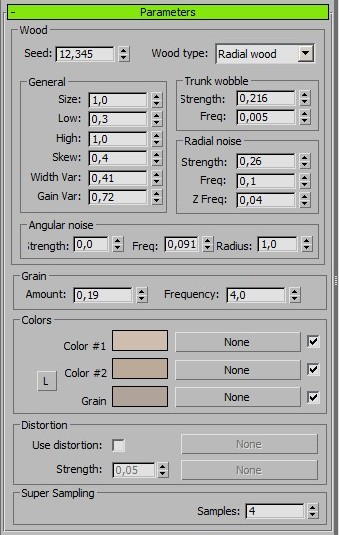3D wood texture by Jerry Ylilammi: Berconmaps
Recently I’ve created some images of a wooden chair designed by Reinier de Jong. I’d like to show the wood texture I’ve been using. I’ll share the images of the chair soon (they’re part of a contest). They’re by Jerry Ylilammi and they’re called Berconmaps. It’s a set of procedural textures with a powerful gradient, noise, tile, distortion and wood.
You can get these textures on Jerry’s blog.
The procedural wood texture is around for quite a while now, but I never had the need for the wood texture, until now! The wooden objects I had to create had an irregular shape and were round, bent and cut. This made it very hard to use bitmap wood texture. In this case it’s an option to use a 3d-texture, such as the procedural wood. 3dsMax has a wood texture but the one in the berconmaps is so much better. A big advantage of a 3d-texture over a 2d-texture is the fact that you don’t need mapping coordinates. A 3d-texture has a color-value for every point in space precalculated. This is illustrated by the following two images. The first image has the 3d-texture applied to it. You can see the sides have a different look than the top. This could be done by using two different kinds of bitmaptextures: one for the sides and one for the top.
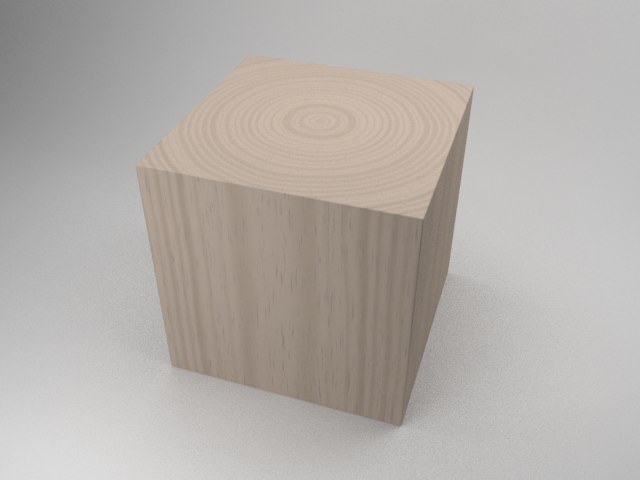
Now consider this second image. It has the exact same wood-texture. All the geometric variations are mapped as one would expect. This is very hard to do with normal bitmap-textures. One good thing about the berconmaps-wood is that it can look a lot better than the default wood in 3dsMax. Another advantage is the fact that you can play with the coordinates of the map in a very clever way. This is apparent when you work with multiple objects.
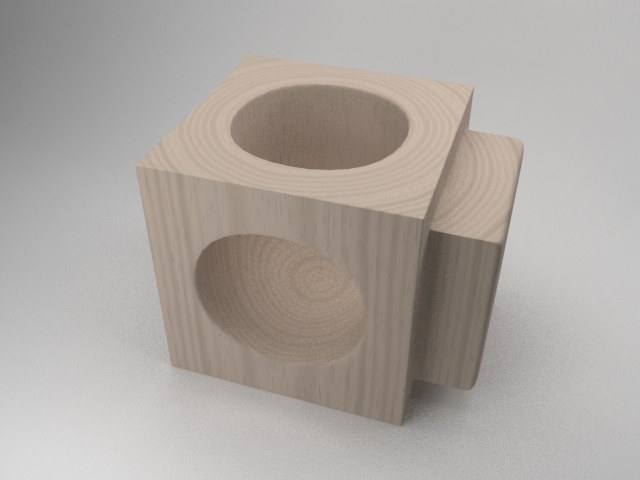
The following example has the exact same map applied to multiple objects. These objects are instances. The mapping uses the object-xyz coordinates. This results in all objects looking the same: the core of the wood is centered in the object. This looks rather funny because there’s always some variation in wood-textures. That’s why the berconmaps-wood has some clever options to create this variation.
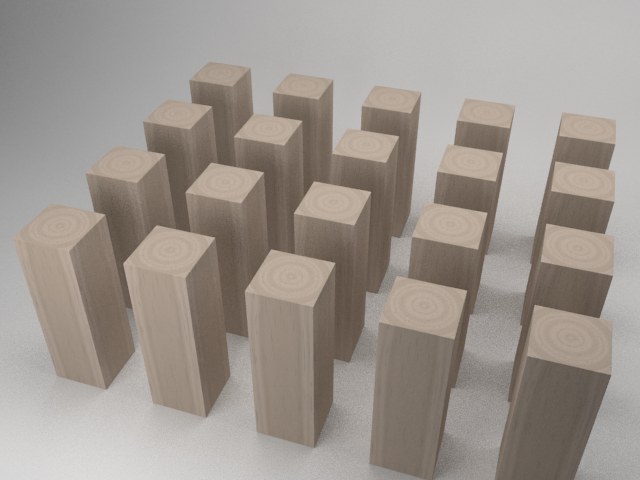
In the mapping rollout of the texture you can create some randomness by offsetting the position of the wood-pattern or by rotating it slightly.
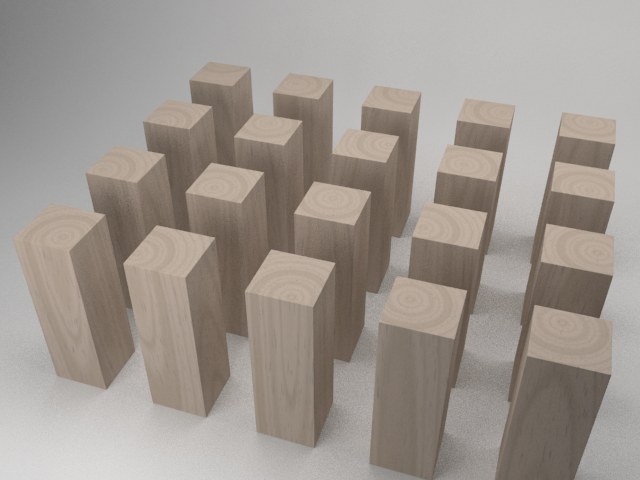
You can also switch the mapping to world-xyz. Now it looks as if all pieces of wood have been carved out of a single block.
